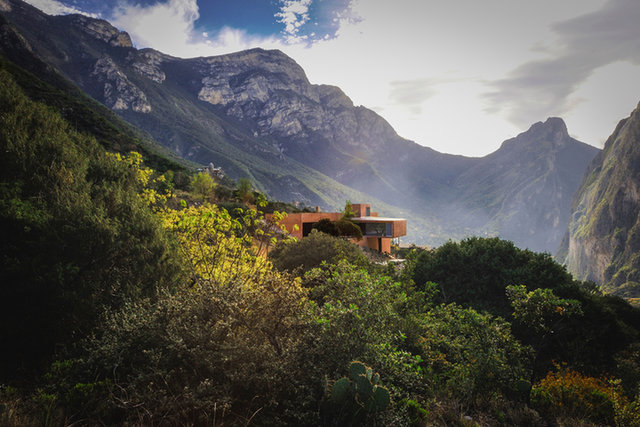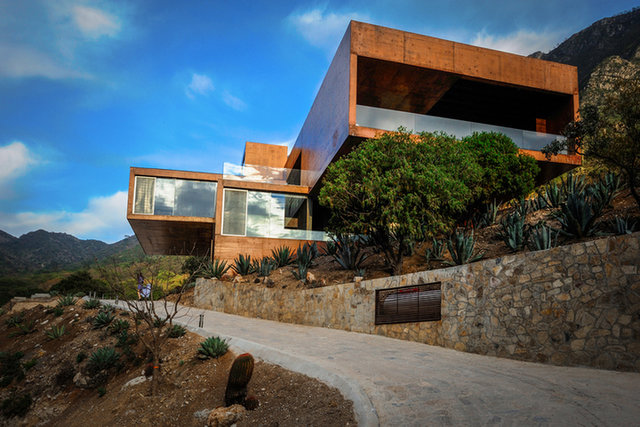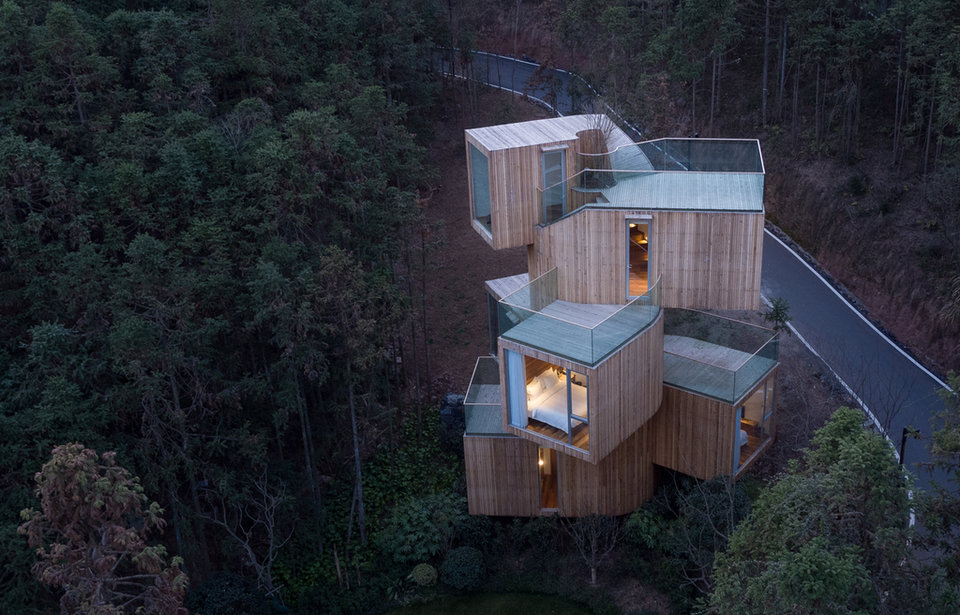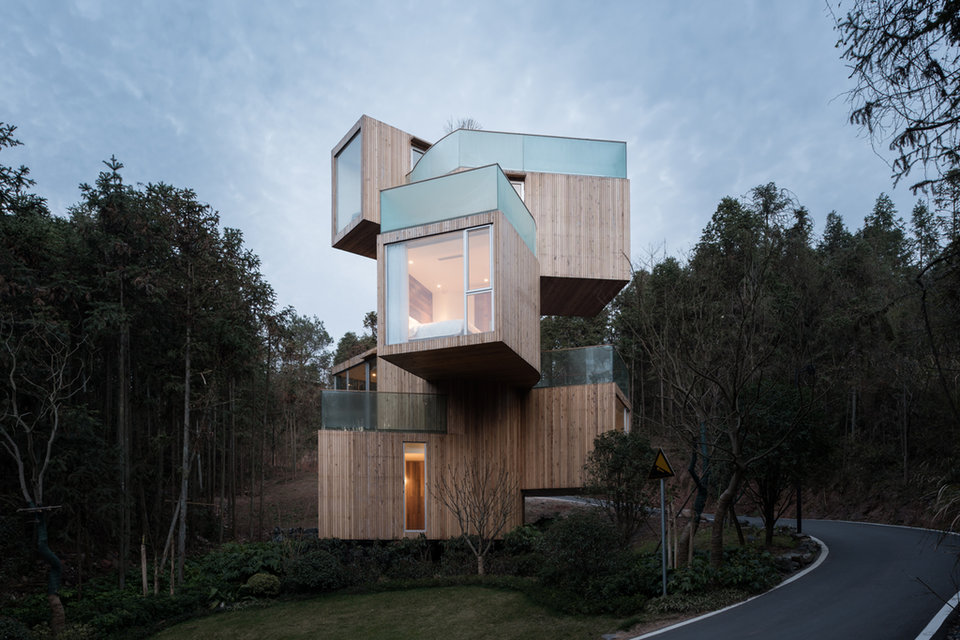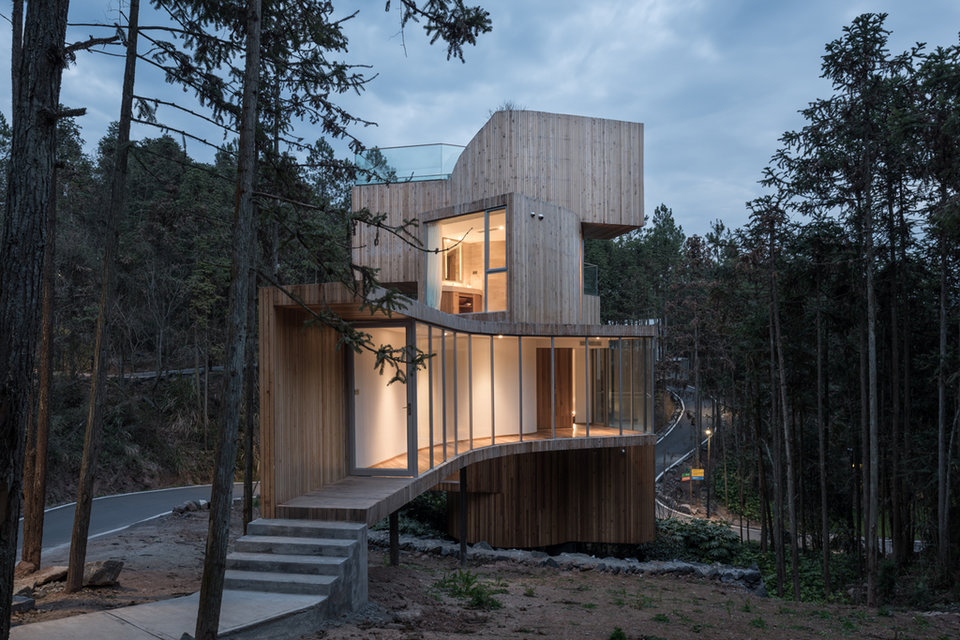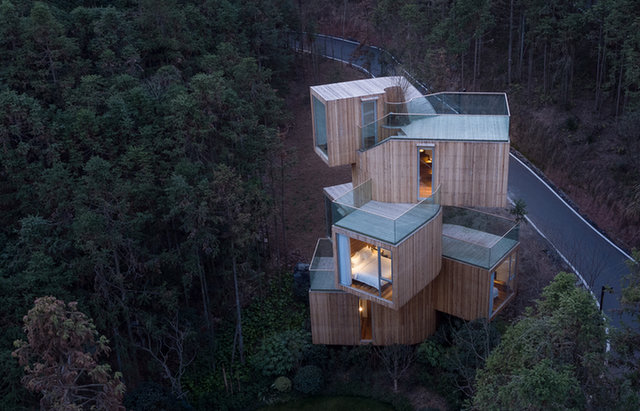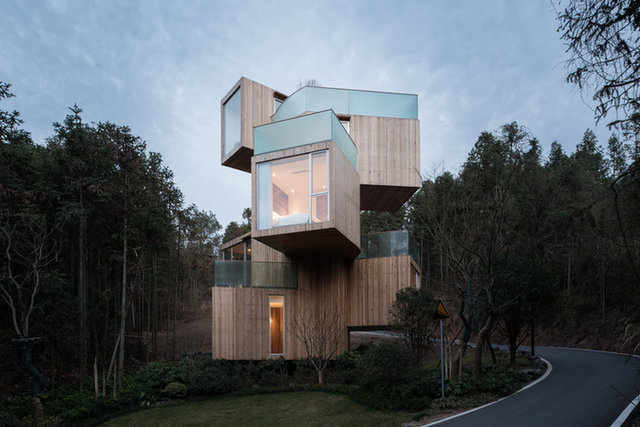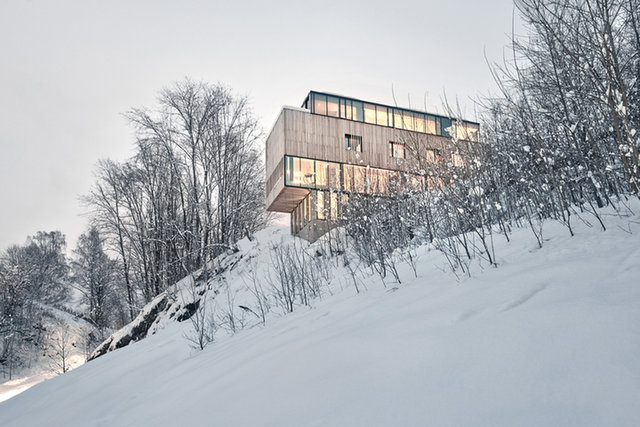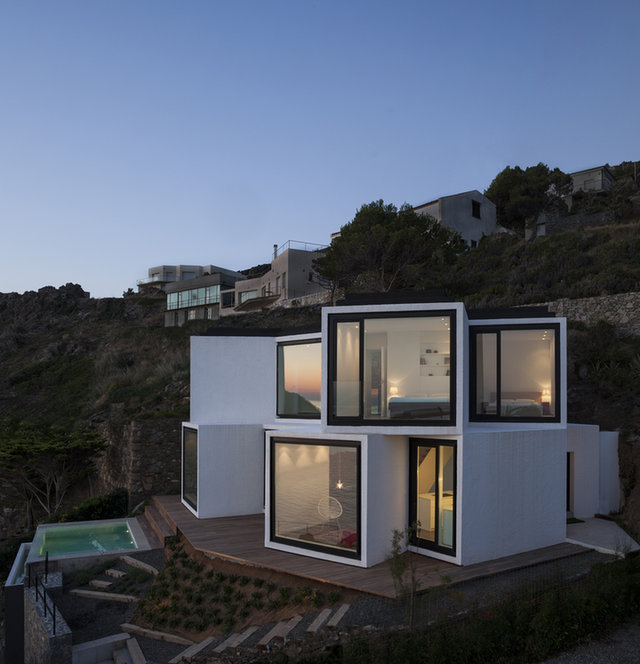Architecture on the Edge
Set for release on 9 December, Edgy Architecture by Agata Toromanoff profiles recently constructed houses built in challenging environments such as cliffs and steep slopes, and the brilliant solutions deployed by architects to seamlessly integrate them into the surrounding landscape. We look at some of the houses featured in the book
Narigua House
El Jonuco, Nuevo León, Mexico
Architects: P+0 Arquitectura
A vast structure sitting in the midst of forest in the mountainous area of northern Mexico, Narigua House was designed to provide remarkable views of the area, while leading the ecosystem untouched. Lifted above the treeline, it features a floorplan that snakes around a group of historic cedar trees. The building features openings in every direction, as well as aspects with 360° panoramic views. Despite the might of the exterior structure, the interior is designed to feel soft, with glazed surfaces and windows breaking up the space.
Images courtesy of FCH Photography
Qiyunshan Tree House
Xiuning, China
Architects: Bengo Studio
Nestled in the midst of a red cedar forest, Qiyunshan Tree House takes a novel approach to the tree house concept by wrapping the 11m-tall structure around a living tree. Using the same red cedar wood for the structure’s façade along with extensive glazing, the structure is designed to provide a space that fits into the area while providing strong connections with it. The building contains multiple observation spaces, connected by a central spiral staircase that leads up to living room and landscape at the top of the structure that offer panoramic views of the forest.
Images courtesy of Chen Hao
Two-in-One House
Akershus, Norway
Architects: Reiulf Ramstad Arkitekter
Providing living space for two families in the one structure as well as a separate, independent apartment in the base, Two-in-One is located at the peak of a steep and rocky slope. Covered with vertical cedar panels that are designed to resist the harsh Norwegian climate, the vast structure has a solid concrete base, yet has a softness that blends with the surrounding landscape. It was designed with assistance from an exhaustive 3D scan of the site, to ensure it was precisely integrated into the surrounding landscape.
Images courtesy of Ivar Kaal
Sunflower House
Port de la Selva, Girona, Spain
Architects: Cadaval & Solà-Morales
Positioned on a cliff-edge in Girona, Sunflower House is named for its multifaceted façade, which is designed to follow the sun while maximising views, rather than offering a single perspective. This configuration also provides effective shielding from the area’s extreme winds, creating shielded exterior spaces, while skyscraper-quality glazing protects the interior. The unorthodox geometry is also designed to reference the rocky cliff below, while the different volumes create defined interior spaces for different functions.
Images courtesy of Sandra Pereznieto
YA House
Hyogo, Nishinomiya, Japan
Architect: Katsufumi Kubota
Designed as a “space for freedom and liberating minds”, YA House is located in a highly mountainous area on a sharp slope and features a highly fragmented silhouette made of reinforced concrete. The horizontal and vertical slabs that make up the bulk of the building’s structure provide shielded spaces for living, while offering considerable light and dramatic views of the mountains beyond. The design places great significance on the boundary between landscape and architecture, with the towering vertical walls painted in white on the interior-facing side, while left bare on the landscape-facing side.
Image courtesy of Kenji Masunaga
Edgy Architecture by Agata Toromanoff is released on 9 December from Lannoo Publishers.
